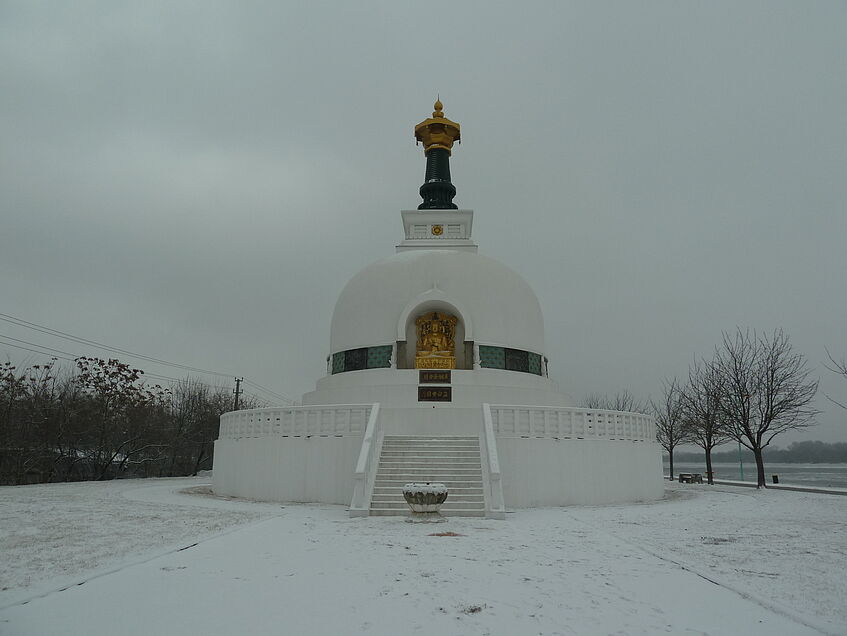The Peace Pagoda in Vienna: A Survey of the Buddhist Order Nipponzan Myohoji in Austria

The Nichiren-based Buddhist order Nipponzan Myōhōji 日本山妙法寺 was founded in 1917 by the Japanese monk Nichidatsu Fujii (1885–1985). At present the group comprises about 1,500 monks and nuns as well as close-knit lay supporters worldwide. Major components of the group’s peacebuilding agenda include peace walks (e.g., in commemoration of the end of World War II, or in protest against the proliferation of nuclear weapons), individual and collective recitation activities (i.e., the chanting of namu Myōhōrengekyō 南無妙法蓮華経, the title of the Lotus Sūtra), and the establishment of the so-called Peace Pagodas, currently numbering around eighty worldwide. In 1983, one of the earliest of these massive Pagodas was erected in Vienna, the same year that Buddhism was formally recognised as a religion by the Austrian authorities. In fact, the development of Nipponzan Myōhōji, and especially the Vienna Peace Pagoda, is closely entwined with the general history and visibility of Buddhism in Austria since the early 1980s. Likewise, Nipponzan Myōhōji’s Peace Pagoda is an essential symbolic domestic landmark of the international peace movement and the growing acceptance of religious diversity at the time, as well as an important rallying point for interdenominational and interreligious dialogue. Discussions pertaining to the establishment of the Vienna Pagoda under Nipponzan Myōhōji’s administration included high-ranking Nipponzan Myōhōji dignitaries on one side, and representatives of Austria’s political elite, such as Bruno Kreisky (then Chancellor), Rudolf Kirchschläger (then President), and Helmut Zilk (then Minister of Education, later Mayor of Vienna), on the other, all of whom took particular interest in the realisation of the building project and the vision of peace and religious tolerance attached to it.
The Peace Pagoda represents a vitally important Buddhist institution in Austria. Annual ceremonies and events are held at the premises, such as the Vesākha celebration (organised by the Austrian Buddhist Society) and commemoration festivals of the bombing of Hiroshima and Nagasaki. Nipponzan Myōhōji commonly takes the dual role of host and intermediary between the Buddhist movement, peace-oriented groups, and the wider public.
This research aims to explore the history of Vienna’s Peace Pagoda and the Austrian branch of Nipponzan Myōhōji. Following an outline of the main doctrinal tenets, and the 100-years history of the group following its establishment by Nichidatsu Fujii (also named ‘Guruji’—spiritual teacher—after Mahatma Gandhi first referred to him as such in 1933) in 1917, the project focuses in particular on a case study of Austrian Nipponzan Myōhōji, represented by founder and current leader Gyōsei Masunaga (b. 1945), and its Peace Pagoda, which celebrated its 33rd anniversary in June 2016. This research seeks to contribute to a better understanding of Buddhist and interfaith networks in Austria. Further, by introducing the dynamic history and activities of one representative international branch of Nipponzan Myōhōji, this research will provide essential insights into the group’s pursuit of world peace on the global stage.
